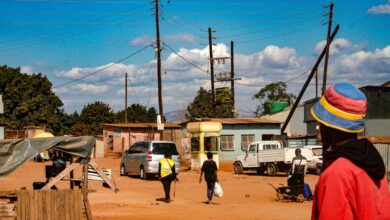The Hidden Cost of “Always Learning”: Why Traditional Methods Fall Short

In our increasingly data-driven world, AI models are no longer static, one-and-done deployments. From the smart defect detection system on a factory floor to the sophisticated image classifier powering your favorite app, these systems are expected to learn, adapt, and improve continuously. But what happens when new data comes in, subtly different from what the model was originally trained on? And what if you can’t simply retrain the entire system from scratch every time, either due to cost, privacy concerns, or the sheer unavailability of old data? This isn’t just a theoretical dilemma; it’s a pressing real-world challenge that many organizations face, often leading to performance degradation or prohibitively expensive updates. It’s a problem known as instance-incremental learning, and recent research offers a fresh, insightful approach to solving it.
The Hidden Cost of “Always Learning”: Why Traditional Methods Fall Short
Imagine you’ve deployed a state-of-the-art deep learning model. It’s performing beautifully on the data it was trained on. But as new observations emerge – perhaps slight variations in product defects, new lighting conditions, or subtle shifts in user behavior – your model starts to falter. The natural inclination might be to retrain it, adding the new data to the old. Sounds simple, right?
Not always. This “retrain everything” approach comes with significant drawbacks. Firstly, the computational cost can skyrocket. More data means more GPU hours, higher energy consumption, and a larger carbon footprint. This isn’t sustainable for continuous improvement. Secondly, and perhaps more critically, old data isn’t always accessible. Privacy regulations (like GDPR), proprietary concerns, or simply limited storage budgets can prevent you from using past datasets. This leaves us in a predicament: how do we promote a model’s performance on new observations without losing its hard-won knowledge of the old, especially when the old data is out of reach?
This is where the concept of incremental learning comes into play. It’s about enabling models to continually learn new information without “forgetting” what they already know – a phenomenon aptly named catastrophic forgetting. While class-incremental learning (CIL), where models encounter entirely new categories of data, receives a lot of attention, instance-incremental learning (IIL) is often overlooked. IIL deals with new observations that still belong to *existing* classes. For example, a defect detector might see a new type of scratch, but it’s still a “scratch,” not a new defect category.
Past research suggested that IIL wasn’t as prone to catastrophic forgetting. Simple fine-tuning with early stopping was often enough. However, a crucial insight from recent work challenges this. When old data is truly inaccessible, and the new data is only a small fraction of the original, fine-tuning often shifts the model’s decision boundaries rather than appropriately expanding them. It’s like trying to fit a new piece into a jigsaw puzzle by distorting the existing pieces, instead of making room for the new one. The real demand in IIL isn’t just retaining old knowledge, but actively enriching it and promoting the model’s performance on these new, subtle variations.
This challenge led researchers to define a new IIL setting: efficiently promoting a deployed model’s performance on new observations while also resisting catastrophic forgetting, and crucially, doing so with *only new data*. This new setting grapples with two core issues: the persistent problem of catastrophic forgetting without access to old data, and the need to broaden existing decision boundaries to accommodate new observations and tackle what’s known as “concept drift” – the gradual change in the data distribution over time.
A Smarter Way to Learn: Decision Boundaries and Knowledge Consolidation
To tackle these issues, a novel IIL framework has been proposed, built on a familiar yet ingeniously re-imagined teacher-student architecture. The key insight? Moderately broaden the decision boundary to accommodate “fail cases” (the new observations the model initially struggles with) while meticulously retaining the old boundary. This isn’t just about adding new knowledge; it’s about carefully sculpting the existing knowledge landscape.
Distilling Awareness: Navigating Decision Boundaries
The framework introduces a process called Decision Boundary-aware Distillation (DBD). Think of it like a student model learning from a teacher. The student needs to not only learn from the new data but also be acutely aware of the existing ‘rules’ or decision boundaries the teacher (the pre-trained model) has established. This awareness helps the student understand where to fortify its knowledge and where to maintain the status quo. However, here’s the rub: if you don’t have access to the old data, how do you even ‘see’ these decision boundaries, especially in the sparse regions around them?
This is where the research takes a clever turn. The solution draws inspiration from a surprisingly mundane, yet effective, act: dusting a floor with flour to reveal hidden footprints. Similarly, to make the learned decision boundaries manifest for distillation, the method introduces random Gaussian noise to pollute the input space. This “dusting” effectively highlights where the model makes its decisions, providing invaluable information to the student without needing the original data.
Teacher Learns Too: Consolidating Wisdom
Perhaps the most groundbreaking aspect of this research lies in its approach to knowledge consolidation (KC). In traditional teacher-student setups, the student learns from the teacher, and that’s often the end of the interaction. Here, the updated knowledge from the student model is intermittently and repeatedly consolidated *back* into the teacher model using an Exponential Moving Average (EMA) mechanism. This is a pioneering attempt because it essentially allows the teacher model, typically seen as a static source of wisdom, to become a better incremental learner itself.
The implications of this are significant. It challenges the conventional wisdom of knowledge distillation, where the student is typically the primary focus of improvement. By allowing the teacher to continuously integrate new learning, the system gains robustness and generalizability over time, making it a truly evolving and self-improving entity. The feasibility of this “teacher learns from student” approach is even explained theoretically, lending strong credibility to its effectiveness.
Real-World Impact and Future Directions
The practical value of this new IIL setting and the proposed framework is immense. Consider the example of defect detection in industrial manufacturing. While the classes of defects (e.g., scratches, dents, discoloration) might be predefined, their precise morphology can vary over time due to changes in materials, manufacturing processes, or environmental factors. A deployed model must be able to quickly and efficiently adapt to these new visual variations without requiring a full retraining cycle or access to vast archives of old, potentially sensitive, data. This research provides a pathway to precisely that kind of agile, cost-effective model promotion.
To establish a solid foundation for future work, the researchers have also reorganized existing datasets like Cifar-100 and ImageNet to create new benchmarks for this specific IIL setting. This ensures that the community has standardized ways to evaluate and compare new solutions in this critical area. The extensive experiments conducted consistently demonstrate the proposed method’s ability to accumulate knowledge effectively using only new data, outperforming many existing incremental learning approaches that falter under these constraints.
Ultimately, this work marks a significant step forward in our understanding and implementation of continual learning. By defining a more practical IIL setting, introducing an innovative decision boundary-aware distillation technique, and creatively consolidating knowledge back into the teacher model, the researchers have offered a powerful framework for building AI systems that can truly adapt and evolve efficiently in dynamic, data-scarce environments. It’s a testament to the power of rethinking established paradigms and finding elegant solutions to complex, real-world problems.





